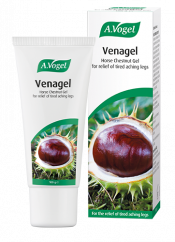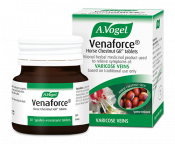How do I get rid of varicose veins on my legs?
Are your legs smooth or are they criss-crossed with unpleasant veins? Do the veins bulge? Do you end the day with puffy ankles that detract from the perfect leg silhouette?
These could all be signs of varicose veins. To help you deal with this problem, this blog will cover:
- Exercises for varicose veins
- How herbal remedies can help
- Simple tips to reduce varicose veins.
What are varicose veins?
The veins are in charge of returning blood to the heart and lungs, where it is refilled with oxygen to be carried around the body. When the veins are weak and unhealthy, circulation is poor, oxygen supplies are interrupted, and skin becomes rough and heals slowly.
Varicose veins most commonly develop on the legs and are characterised by some key symptoms, including:
- Tired, heavy legs
- Swollen, twisted veins
- Swollen ankles
- Cramps in the calf
- Itching in the lower legs.
There are a few instances in which varicose veins are more likely to develop, such as if:
- You work at a sedentary job
- You are standing for long periods
- You are overweight
- You are or have been pregnant
- You habitually wear tight clothes or high heels
- Your parents had poor vein health.
So, what can you do about varicose veins?

What exercise is best for varicose veins?
Veins need daily movement: walking, cycling and swimming are all good choices, or even something gentler such as yoga.
If you do not have time for a sporting activity, simple stretches can help to keep blood vessels healthy and elastic. Here are some suggestions but do, just take care not to overstrain yourself!
Vein exercise 1
- Stand up straight.
- Stand on tiptoes and then rest feet back on ground.
- Repeat 10 times.
Vein exercise 2
- Simulate a duck treading water but on dry land.
- First lift your right leg at a right angle to your body, toes pointing downwards.
- Bring your heel smartly down onto the floor and change to the left foot.
- Repeat 1 to 20 times.
Vein exercise 3
- Sit on a chair.
- Put the soles of both feet on the floor, hands on thighs or by your sides.
- Either individually or together, place feet on point of toes in order to work the calves.
Vein exercise 4
- Lie on your back on the floor with your hands under your buttocks or out to the sides.
- Lift one leg up to the vertical, keeping it straight.
- Hold it for as long as you can, then lower and repeat with the other leg.
After doing any of these or other exercises involving the large muscles of the lower body, following a long walk or if you have been standing for a long period of time, you should consider elevating your legs 15 to 30cm (6" to 12") above your heart for a few minutes.
Does horse chestnut help varicose veins?
European herbalists have a long-standing tradition of using extracts of Horse Chestnut (Aesculus hippocastanum) for various venous conditions. It is also a popular herb for the treatment of varicose veins.
You can try Horse Chestnut in tablet form, though it is also available as a gel to be applied topically. Venagel, for example, is made from freshly harvested Horse chestnut seeds and can provide relief from tired, achy and uncomfortable legs.
Aesculus, the Horse Chestnut tree, was introduced to Britain sometime around the 1600s, from its original home in Turkey and the Balkan States. Its eventual spread was probably partly due to its popularity with landscape designers, who used them extensively when planting up the grounds of stately homes. As they are very resistant to atmospheric pollution, they do well on road verges and in city parks.
The trees were planted for their ornamental value. The wood is too light and soft to be much in demand, although it was used to make artificial limbs at one point. The wood doesn't burn well either, which may have contributed to the survival of many large and aged specimens of Aesculus.
The fruit, the conkers that you may recognise, have at various times been used as cattle feed, as well as furnishing children with ammunition for conker battles. Some creatures, though, find the saponins contained in conkers quite toxic: hunting tribes have traditionally used them to stupefy fish and make them easier to catch!
My Top Tip:

Massage Venagel into the skin 2-3 times in an upwards motion.
"Very soothing and makes legs comfortable."

Tips for healthy veins
Alongside exercise and herbal remedies, there are a few other things you can do day-to-day to keep the veins healthy.
Practicing deep breathing will help to get sufficient oxygen into the bloodstream. Oxygen, as I mentioned above, is very important for healthy veins. You could take a look at our blog 'Breathing tips to relieve stress' for some more information.
At the end of a shower, run the water cold for a few minutes. This helps to exercise the blood vessels, or wake them up, so to speak.
Wearing loose clothing and comfortable shoes, especially when on your feet for long periods, also puts less pressure on the veins.
Another tip is to avoid fierce heat in hot baths, saunas and during long periods of sunbathing. An increase in temperature can actually make the symptoms of varicose veins more severe.
These are just a few tips to keep your veins healthy but, if you would like some more information, check out our page on varicose veins treatments.








